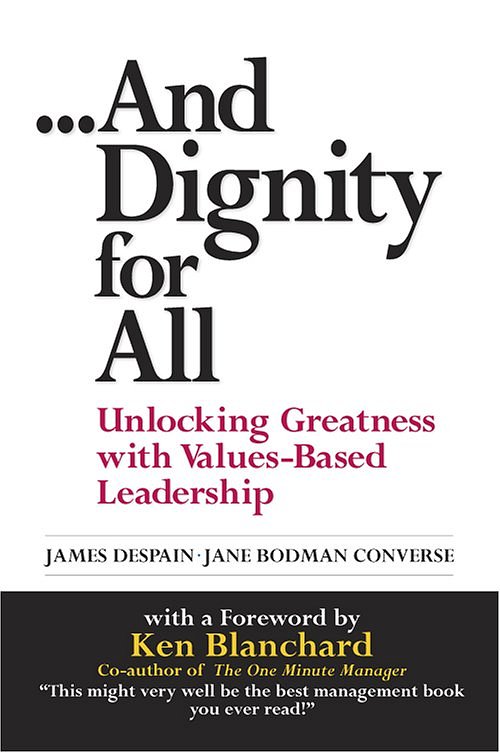|
April 17, 2003 |
||
|
|
…AND DIGNITY FOR ALL Unlocking Greatness with Values-Based Leadership James Despain and Jane Bodman Converse FT Prentice Hall, 2003, 198 pp. |
|
|
Despain, a high-school educated boy from a central Illinois coal town dreamed of working for industry giant Caterpillar. Beginning with a broom job, he rose to become V.P. and General Manager of the Track-Type Tractors Division, the cornerstone of the company. The book is an interesting biographical history of the hodge-podge development of his management skills. During his career, he started up new plants in Japan and Mexico, learning various working cultures in the process. The crisis of his management career came when he took over
the above division, finding it hopelessly losing money. The top management team could find no
possible way to turn the situation around.
At that point, one of his managers came up with the following: “Well, one of the things we’re not doing is energizing our
people,” Gordo said. “We’re not
getting their buy-pin. We don’t have
their trust. We’re not picking their
brains or unleashing their creativity.
If we don’t turn loose the power of our people, we’re never going to
make any strides in cutting costs. We
can’t do it alone.” (134). Based on this insight, the top leadership team spent 18
months reengineering their management style to learn and embrace values-based
leadership. “We had all seen how vision statements…were stuck on walls
or lost in files. They were so high
level, people couldn’t relate to them.
They were just words. They
didn’t tell people how to make the vision a reality.” (138) Despain realized they couldn’t expect to change the
corporate culture without change at the top management level. He asked, “What has to change here for us
to reach this vision?” (139) “I knew
the worst thing that could happen was for me to introduce the values process
to the organization and then not be able to walk the talk.” “ The road to change for me began with the
value of Trust. My epiphany was the
realization that for my entire life I had trusted no one.” (143) Nine corporate values were developed, described in detail,
and provided to managers in a Leadership Guide that also provided seven
leadership responsibilities and explained, stepwise, how to operate in a
manner to support the values. These
descriptions are given on p. 146 and the leadership guide is provided in the
nine-page appendix. Here are the nine
values:
“We started to listen, really listen, to what others were
trying to say.” (142) Values must be the central message. (165) “People mirror the behavior they see exhibited and
rewarded.” (178) The Appendix shows the nine values diagramed as a house: Foundation: Trust and Mutual Respect Pillars:
Teamwork, Empowerment, Risk Taking, and Sense of Urgency Base of
Roof: Continuous Improvement and Commitment are the Gable: Customer Satisfaction Summary: “Values,
defined as shared beliefs with standards for behavior in the workplace, are
the key to succeeding in changing and challenging times. …they provide people a context for their
decisions, broad boundaries for their ideas, and more freedom to make a
difference.” Employees feel an
investment in the organization. They
are inspired rather than constrained and, in the process, create a
high-performance organization.
(Introduction) “Leadership is about others and not about self. It is about trust and not about
power.” (Introduction) |
||
